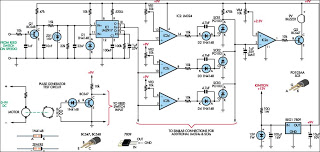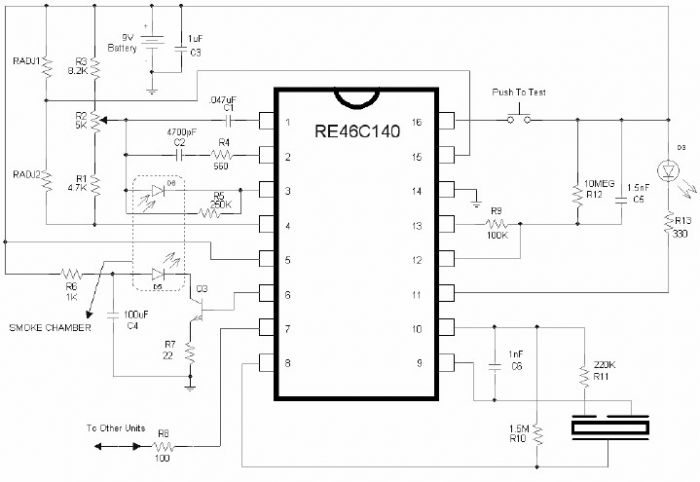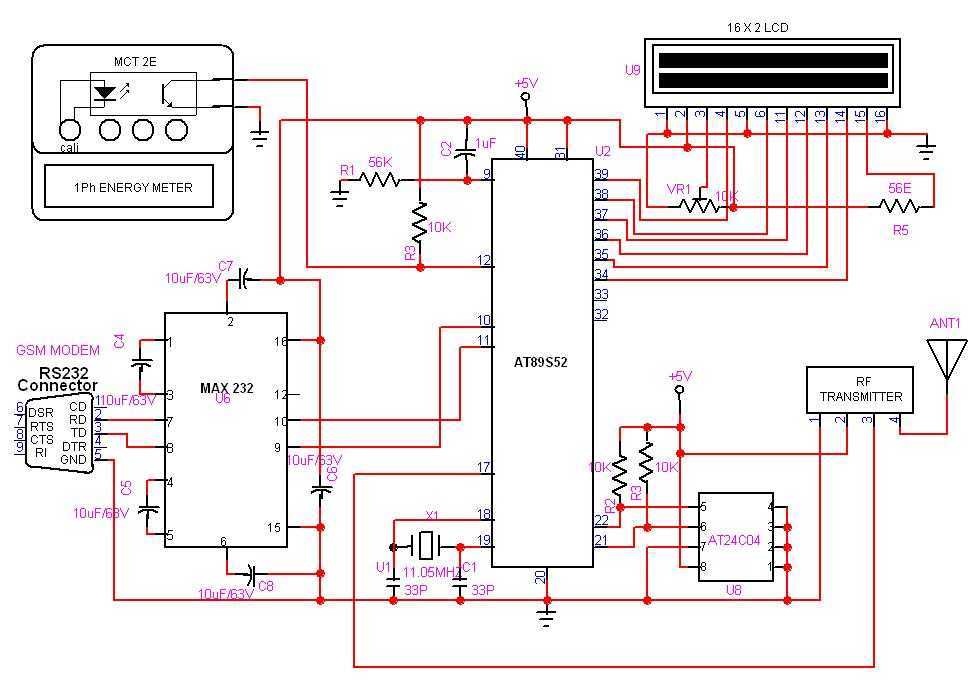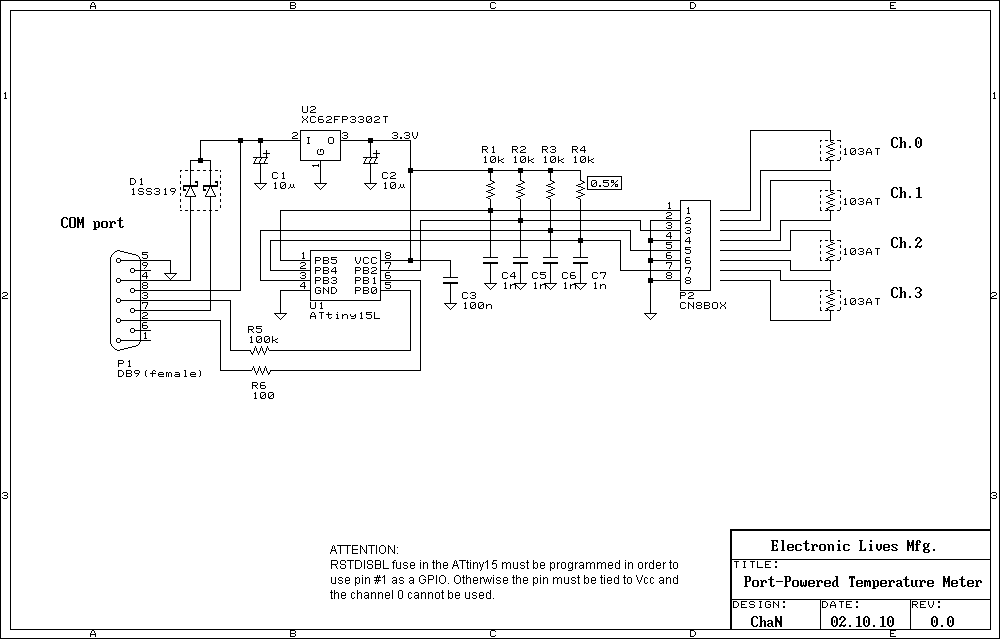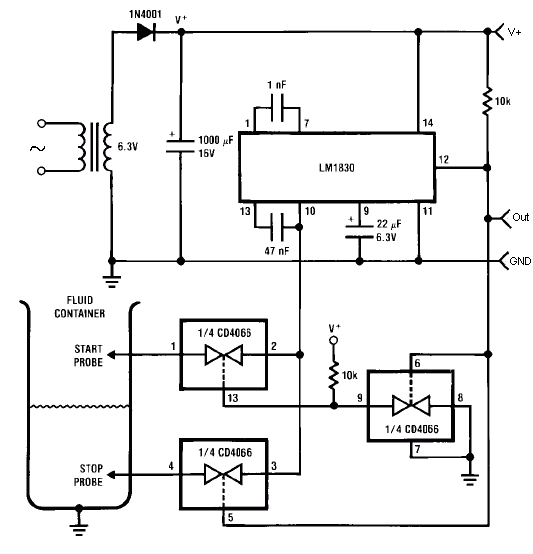
vu meter schematic
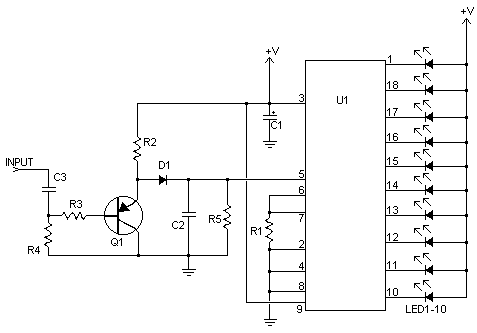
This sound level meter serves as an excellent one-chip alternative to traditional analog meters. It is entirely solid-state, ensuring durability and longevity. The circuit is based on the LM3915 audio level integrated circuit and requires only a minimal number of external components. Additionally, this circuit can be incorporated into audio amplifier projects. Recent improvements, facilitated by community feedback, have introduced a peak detector, enhancing output stability and visibility. This page has been updated to reflect the new circuit design.
The sound level meter circuit utilizes the LM3915, which is designed to drive a 10-segment LED bar graph or a 14-segment LED dot display, providing a visual representation of audio levels. The integration of a peak detector allows the circuit to capture and hold the maximum audio level, making it easier to read fluctuating signals. This feature is particularly beneficial in environments with varying sound levels, as it offers a more stable output that can be monitored over time.
The circuit typically includes a few passive components such as resistors and capacitors, which can be configured to set the sensitivity and response time of the meter. The LM3915 operates with a wide input voltage range, making it suitable for various audio applications. The output can be easily interfaced with other audio equipment, allowing for seamless integration into existing systems.
For those integrating this sound level meter into audio amplifier projects, careful consideration should be given to the power supply and grounding to minimize noise and ensure accurate readings. The compact nature of the circuit makes it ideal for portable applications, where space is limited. Overall, this sound level meter circuit represents a modern solution for audio level monitoring, combining simplicity, reliability, and enhanced functionality.This nifty sound level meter is a perfect one chip replacement for the standard analog meters. It is completely solid state and will never wear out. The whole circuit is based on the LM3915 audio level IC and uses only a few external components. This circuit can also be integrated into audio amp projects. Thanks to help from the forum, this circu it has been improved from the original version to include a peak detector for a more stable and viewable output. This page has been updated with the new circuit. 🔗 External reference
The sound level meter circuit utilizes the LM3915, which is designed to drive a 10-segment LED bar graph or a 14-segment LED dot display, providing a visual representation of audio levels. The integration of a peak detector allows the circuit to capture and hold the maximum audio level, making it easier to read fluctuating signals. This feature is particularly beneficial in environments with varying sound levels, as it offers a more stable output that can be monitored over time.
The circuit typically includes a few passive components such as resistors and capacitors, which can be configured to set the sensitivity and response time of the meter. The LM3915 operates with a wide input voltage range, making it suitable for various audio applications. The output can be easily interfaced with other audio equipment, allowing for seamless integration into existing systems.
For those integrating this sound level meter into audio amplifier projects, careful consideration should be given to the power supply and grounding to minimize noise and ensure accurate readings. The compact nature of the circuit makes it ideal for portable applications, where space is limited. Overall, this sound level meter circuit represents a modern solution for audio level monitoring, combining simplicity, reliability, and enhanced functionality.This nifty sound level meter is a perfect one chip replacement for the standard analog meters. It is completely solid state and will never wear out. The whole circuit is based on the LM3915 audio level IC and uses only a few external components. This circuit can also be integrated into audio amp projects. Thanks to help from the forum, this circu it has been improved from the original version to include a peak detector for a more stable and viewable output. This page has been updated with the new circuit. 🔗 External reference
